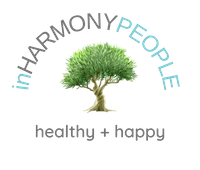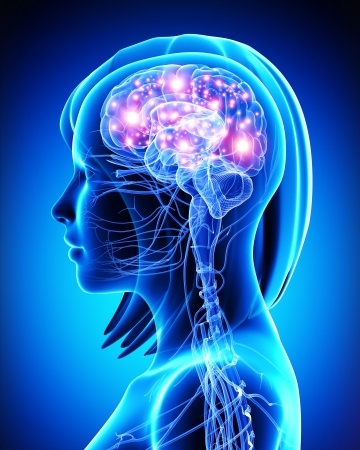[vc_row][vc_column][vc_column_text]
by Lacey Sethness
Enter the world of detoxification, learning all about the different pathways utilized by the body to keep us functioning, healthy and happy!
“Detox” is a term that has a variety of meanings to different people, from drug and alcohol detoxification, to metabolic and nutritional detoxification, and even cleansing programs that utilize food, smoothies or juices to stimulate the body’s release of toxins. The scope of this series will be focused on Metabolic and Nutritional Detoxification, as well as programs intended to support and facilitate the mechanisms of each.
Before the matter of detoxification can be appropriately discussed, it is important to first define the term ‘toxin’, as well as recognize anything that either contains, or is itself, a toxin. Without understanding what constitutes a toxin, it is also impossible to understand the complex mechanisms through which the body converts and eliminates those toxins from itself.
TOXINS are anything that can potentially irritate or harm body tissue, and which negatively influence our body’s detoxification systems. Detoxification, therefore, is any process that decreases the negative impact of chemicals or molecules on the body, involving biotransformation of these toxic substances into forms which it can excrete. We are constantly exposed to toxins, which are better or worse depending on the area in which one lives, and the human body produces toxic metabolic elements, also better or worse depending on the overall health and health of each internal system.
They are in us and all around us in today’s world and can be quite overwhelming if listed individually.
Fortunately the list of toxins can be simplified, each one falling into the category of either internal or external toxins, and sometimes both.
External toxins are those which originally exist outside the body, like air pollution or pesticides, while internal toxins are those which are created from processes inside our own bodies, such as cellular wastes. Inside the body, toxicity can also occur from the side effects of drugs, or from patterns of physiology that are different from our usual functioning. Further, ANY substance, if in excess, can create toxic elements in the body: sodium, vitamin C, even water – almost all nutrients can become toxic in certain concentrations and circumstances.
Here is a list of some of the most common toxins (or toxic precursors) to which our bodies are exposed on a daily basis:
External Toxins
• Environmental pollutants
• Silver/mercury dental amalgams
• Mercury contained in fish
• Lead contained in old paints, blinds and canned goods
• Aluminum contained in antiperspirant, deodorant, antacids
• Constant mold exposure from improperly controlled rooms (basements, bathrooms, etc.),
• Occupational exposure (Higher risk: miners, pottery artist, mechanics, pesticide exposure)
• Poor air quality and sick building syndrome
• Contaminated water, food
• Inhalant smoke
• Chemicals found in personal care products, household cleaners
• Bisphenol A, found in soft plastics
• Phthalates
• UV radiation
Internal Toxins:
• Cellular/Metabolic Wastes
• Sugar, poor quality fats (trans, hydrogenated or partially hydrogenated, canola and cottonseed, deep fried), processed foods, refined flours
• Poorly Digested Foods
• Chronic infections from bacterial, parasitic and fungal overgrowth
• Allergic reactions (immediate and delayed sensitivities)
• Most common delayed type sensitivity (gluten, dairy, egg, corn)
• Medications
• Long term use of tylenol is one of the leading causes of liver failure and prevents liver detoxification
• Proton pump inhibitors (acid blockers) lead to subpar digestion and absorption of vitamins
• Emotional or Physical Stress
• Lack of Sleep
Do any of the above-listed toxins make an appearance in your daily routine? Can you think of at least one toxic thing you put in your body or do every day?
While it’s all fine and dandy to be told that something like sugar is toxic to our bodies, that fact alone may have no more behavior-changing momentum behind it than you have will power to avoid the pan of brownies sitting on the counter at home. In a world where almost everything is accused of causing cancer, it is not enough to simply claim that a specific substance or behavior is “toxic”; to truly comprehend the implications of a body that is toxic, one must understand the ways in which it is affected by these accumulating toxins.
Whether internal or external, once inside the body every single toxin must pass through, be processed by, then excreted via one or more detoxification systems found within the body. This is a natural, ongoing process through which the body cleans, repairs, and heals itself. When each system is functioning optimally, the body is able to efficiently and effectively eliminate harmful toxins before they have the opportunity to cause any significant damage. It is when these detox pathways become overwhelmed and undernourished that toxins begin to accumulate in the body, and if left unchecked, disease states ensue.
An example of this process – toxin accumulation, failure of one or more detoxification systems, and the subsequent onset of disease – is cancer. While some may argue that genetics are the primary determinant as to whether an individual will develop cancer in his or her lifetime, the fact of the matter is that genetics are only a small piece of a very large puzzle. Someone may have every genetic marker indicating that she will develop some form of cancer in her lifetime, but if the accumulation of various toxins – known as the body’s Toxic Burden – remains low, and the detoxification pathways maintain optimal (or near optimal) functioning so that they remain open, there is absolutely no guarantee that she will succumb to that fate. Conversely, an individual who is virtually free of cancerous indicators, yet habitually engages in activities which stress, slow and block the pathways of detoxification, has an equal, if not greater, chance of developing cancer than his health-conscious counterpart. How is this possible?
The human body as a whole is incredibly resilient . . . as long as its systems are adequately nourished and optimally maintained. Cells that become cancerous are no more than rapidly dividing cells; unchecked, they undergo mitosis repeatedly until tumors develop or they metastasize into other areas of the body, where the process is continued. Our bodies are programmed to control the rate of cell division in order to prevent conditions such as cancer, so why are we continuing to see such alarmingly high rates of this and other diseases that are basically normal physiological processes gone rogue, such as cancer and autoimmune conditions?
The answers lie in the toxins in and around us. There is no doubt that the world today is glaringly different than that of our ancestors: Automobiles billowing pollutants out into the air; waste products from manufacturing companies making their way into our water supply and marine life; chemicals in the items we use to clean our bodies and homes, and in the foods we use to fuel our bodies. Even our emotions are far more toxic today than in the past due to increased sources of stress: the up and down economy; pressure from family and loved ones to be successful; worry over being alone; pressure to have a supermodel physique; raising multi-children families while working and often going to school as well. Individually, each of these toxins may cause no noticeable decrease in the body’s detox systems. Over time, however, the toxins begin to accumulate and compound with one another until the weakest link in the detoxification pathway becomes overburdened. Once the downward spiral of one organ or system is initiated, the process is very difficult to stop, and a runaway train scenario is sure to follow. Once this happens, it becomes crucial that the exposure to toxins is minimized and a proper detoxification program employed. If not, and the lifestyle continues down the path in which it became toxic in the first place, the result will most certainly be disease.
Detox: The History of Detoxification
by Lacey Sethness
While the concept of detoxification, including the programs and techniques claiming to successfully accomplish the process, may seem like yet another unnecessary trend currently flooding the health scene, the theory supporting its efficacy actually goes back thousands of years.
Cleansing has been a long-established health and wellness practice around the globe; here are just a few detoxification traditions amongst various cultures throughout time:
- 4th Century BC – Hippocrates aka “Father of Medicine” recommends periodic fasting to cleanse and rest the digestive tract.
- 16th Century – Paracelsus, a renowned physician – called fasting the “Greatest remedy, the physician within”.
- In India yogis and Ayurvedic practitioners have always promoted the health benefits of internal cleansing.
- In North America, Native Americans utilized detoxifying sweat lodges.
- Europeans have undergone colonics and sauna sessions for centuries.
- Other techniques involve the use of herbs, water, rest and meditation, exercise, and a variety of bodywork techniques.
- Physical: Assists the body in clearing congestions, illnesses, and disease potential. It can also improve energy.
- Emotional: Helps uncover and express feelings, especially hidden frustrations, anger, resentments, or fear, and replace them with forgiveness, love, joy, and hope.
- Spiritual: Many people experience new clarity and/or an enhancement of their purpose in life.
- Pancha Karma: Physical elimination processes such as purgatives and medicated enemas. Panchakarma is an ancient form of purification developed thousands of years ago in India. It is considered to be the ultimate mind-body detoxifying experience. It involves several levels of purification practices. Pancha means ‘five’. Karma means ‘cleansing action’.
1. Nasya, Nasal Administration of Medication
Usually involves oil, ghee, and powdered herbs, and gentle massage of the nasal passages. Aims to clear sinuses, help with headaches, and eye problems.
2. Basti, Herbal Enemas
Again using oils, ghee, and herbal decoctions. Aims to alleviate constipation, distention, sexual disorders, back pain, arthritis, and even common cold.
3. Virechan, Internally-Taken Purgatives/Laxatives
Oil, ghee, and herbs, you guessed it. Indicated for asthma, colds, indigestion, poor immune system, skin conditions, diabetes, and more.
4. Vaman, Therapeutic Vomiting
Involves drinking lots of salted water, or licorice tea, and inducing the stomach to expel it to clear toxins from the digestive system. Great for asthma, diabetes, colds, and indigestion.
5. Rakta Moksha, Blood-Letting
Ancient practice, indicated for acne, scabies, and liver and spleen problems.
- Palliation (Shaman): The next step in Ayurvedic disease management is palliation, or shaman, used to balance and pacify the bodily dosha. Shaman focuses more on the spiritual dimension of healing, and uses a combination of herbs, fasting, chanting, yoga stretches, breathing exercise, meditation, and lying in the sun for a limited time. These techniques are useful for people with dysfunctional immune systems, or for those who are too ill or emotionally weak to undergo the more strenuous forms of physical cleansing noted in pancha karma. Because of its curative and preventative aspects, shaman can also be utilized by the healthy person. Like all enlightened healing methods, Ayurveda emphasizes prevention above curing disease.
Native America: Purification Rituals
- Sweatlodge: An enclosure physically similar to a steam sauna that induces sweating and therefore the release of toxins. With the help of Medicine Men and Women, individuals could repair the damage done to their spirits, minds and bodies. The Sweat Lodge is a place of spiritual refuge and mental and physical healing, a place to get answers and guidance by asking spiritual entities, totem helpers, the Creator and Mother Earth for the needed wisdom and power. The aim of the ceremony is to purify one’s mind, body, spirit and heart.
In many traditions the entrance to the sweat lodge faces to the East and the sacred fire pit. This has very significant spiritual value. Each new day for all begins in the East with the rising of Father Sun, the source of life and power, dawn of wisdom, while the fire heating the rocks is the undying light of the world, eternity, and it is a new spiritual beginning day that we seek in the sweat ceremony.
Many sweats start with the participants fasting for an entire day of contemplation in preparation for the sweat while avoiding caffeine, alcohol and other unhealthy substances. Prior to entering the sweat the participants usually smudge with sage, sweetgrass or cedar smoke as a means toward ritual cleanliness.
During the purification of one’s spirit inside a sweat lodge, all sense of race, color and religion is set aside. As in the Mother’s womb and the Father’s eyes, we are all the same, we are One. Each of us has the ability to sit with the Creator himself. Healing begins here for dis-ease, physical, emotional, directional and spiritual.
- Smudging: Sage is burned in smudging ceremonies to drive out bad spirits, feelings, or influences, and also to keep bad spirits from entering the area where a ceremony takes place. In Plains nations, the floor of the sweat lodge is frequently covered with sage, and participants rub the leaves on their bodies while in the sweat. Sage is also commonly spread on the ground in a lodge or on an altar where the pipe touches the earth. Some nations wrap their pipes in sage when they are placed in pipe-bundles, as sage purifies objects wrapped in it. Sage wreaths are also placed around the head and wrists of Sundancers.
China: Detox Methods
- Chinese Detox Tea: The Chinese use herbs to clean the liver, kidneys, lungs and blood. Drinking detox tea regularly will help you feel calmer and give you increased energy and clearer skin. The teas contain numerous potent herbs such as red clover, honeysuckle flower, dandelion root and ginger root. Combined, these herbs promote the flushing of toxins absorbed by your body through the environment, smoke, alcohol, caffeine and more.
- Cupping: Cupping, a generally painless detox technique the Chinese have practiced for millennia, has spread to the rest of the world in recent years. Similar to acupuncture, cupping stimulates blood circulation and treats colds, infections and muscle and joint pain. The practitioner will place cups made out of strong glass directly on your skin to create suction. Pumps will increase the suction, and your skin inside the cup will rise. The suction and pressure free up blockages and let your energy flow.
- Meridian Tapper: Chinese holds that the body contains hundreds of meridians, or energy centers. The meridian tapper process clears your meridian paths and removes waste from deep in your muscles. The practitioner uses a special meridian tapper to clear the path, and elevated bruises will appear where your blood had previously stagnated. If your body is in balance, the tapper will not produce purple welts.
- Foot Detox Pads: Your body has 360 acupuncture points—many of which are found in the soles of the feet—where toxins can escape. Chinese foot reflexology maintains that these points connect to corresponding parts in rest of the body. Place Chinese foot detox plasters on your feet overnight; the pads draw the toxins out through the acupuncture points while you sleep. The pads will appear darker in the morning, reflective of the toxins they have drawn out. With increased use, the pads should show progressively lighter staining.
- Scraping: Scraping is another Chinese detox process aimed at improving circulation and energy flow in your body. Before beginning the treatment, dab your skin with oil. The practitioner will scrape the parts of your body needing stimulation to improve what ails you. Commonly scraped areas include the back, chest, arms, shoulder blades and legs. Tiny red or purple dots that look like rashes will appear on the scraped area. Despite the appearance to the contrary, the process is also relatively painless; the dots indicate stagnate blood filled with toxins. After the procedure, you should feel better blood circulation and as well as relief from headaches and sinus pain, among others.
As you can see, the practice of detoxification, be it in the form of purification or cleansing, has been prevalent in different cultures and societies for thousands of generations. Whether used for physical, emotional, or spiritual detoxification, the traditions play such important roles within each culture that may continue to be passed down even today.
Do you engage in any detoxification, purification, or cleansing traditions that have been passed down through your family or culture?
[/vc_column_text][/vc_column][/vc_row]







